Landscape composition: an idea to tame every aspect
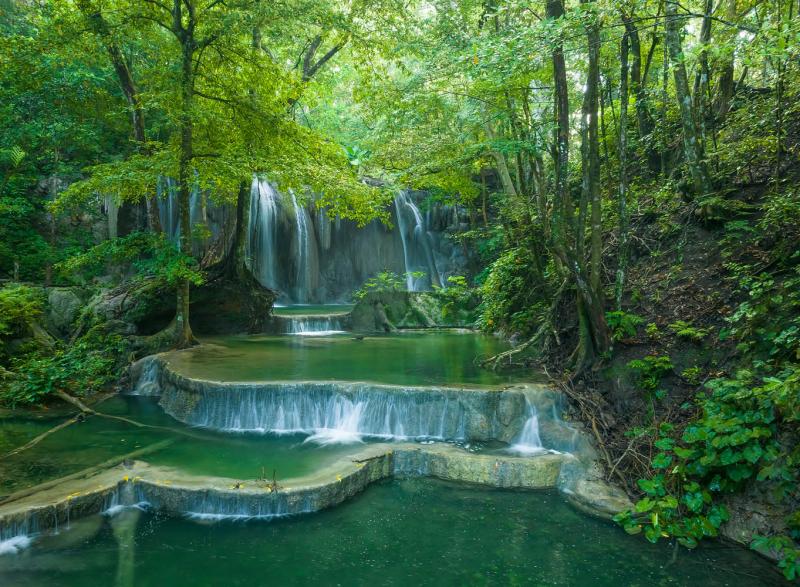
I resume my series of articles on landscape composition. So far I have told you about the compositional elements, their weights and how to use their properties to balance the composition by imagining a balance of pairs to balance the composition by imagining a balance of pairs around the central axis of an image. I also talked about balancing negative space, of the perception of the direction of the subject and the often overlooked importance I reserve for the separation of the elements. I then discussed depth perception and how to use the sky in a landscape image and finally how to connect elements in a way connect elements in a way that makes sense.
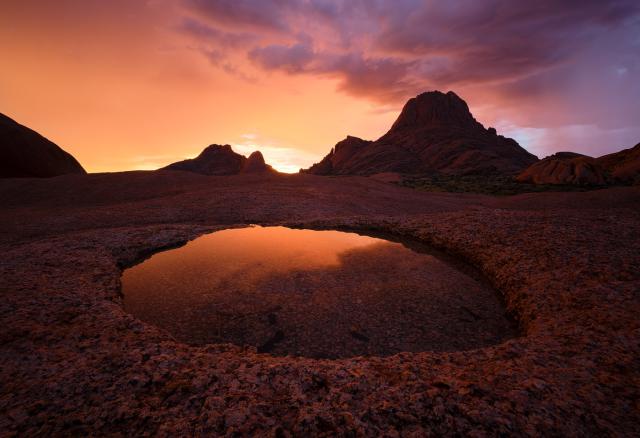 Sony A7R, Canon 16-35 f/2.8 16mm, f/16, ISO 100, 2 sec (overlapping focus) - Spitzkoppe, Namibia
Sony A7R, Canon 16-35 f/2.8 16mm, f/16, ISO 100, 2 sec (overlapping focus) - Spitzkoppe, Namibia
Today I would like to share with you a concept that has taken shape over the years. This idea, while it may seem simple, is incredibly profound and encompasses many of the guidelines I have outlined in this series.
It is a remarkably effective approach to evaluating your fieldwork, and, more importantly, it is a concise and accessible method, free of complexity. Surprisingly, I've found that this idea offers the key to much of what I want to convey when trying to create stronger compositions. Furthermore,
it has proven invaluable in helping people decipher the complexity of breathtaking landscapes, allowing them to find meaning and order in natural chaos.
So let's get straight to the point. The concept I would like to propose is the following:
Saturate the composition with the interesting parts of your subjects
Ok, it looks nice, albeit short, but from this to enclose notions expressed in thousands of words in a long series on composition seems a bit of a stretch, doesn't it? Yes and no. While I think the entire series is very important, remembering this simple concept allows the photographer to easily draw the correct notions and apply them in the field.
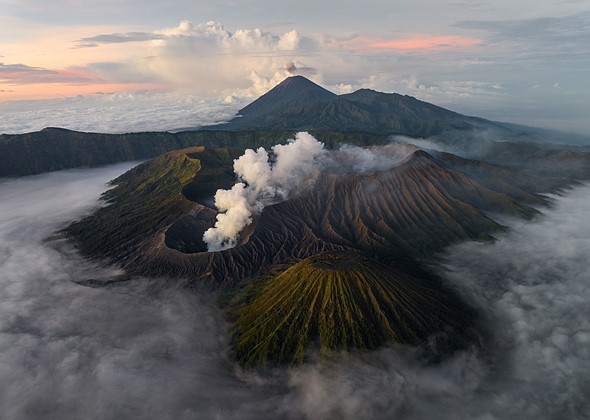 What are the subjects of this image? How would you say they complement and counterbalance each other, based on previous articles in this series? What else could you say about this image? Do you think the subjects are large enough in the frame? They satisfy your need to see and understand details, and at the same time they don't take up too much space and leave some 'breathing room' for other subjects and foggy terrain?
What are the subjects of this image? How would you say they complement and counterbalance each other, based on previous articles in this series? What else could you say about this image? Do you think the subjects are large enough in the frame? They satisfy your need to see and understand details, and at the same time they don't take up too much space and leave some 'breathing room' for other subjects and foggy terrain?
DJI Mavic III Classic f/4, 1/25 sec, ISO 100 - Bromo Tengger Semeru National Park, West Java, Indonesia
Subjects
When he approaches a landscape and wants to create an image of it, the photographer must decide what the subjects are in this image. It may seem easy, but in reality the opposite is often true: in many situations it is very difficult to decide what to include in an image, and the more the panorama is rich in information, the more difficult it is to evaluate everything and decide which elements to use.
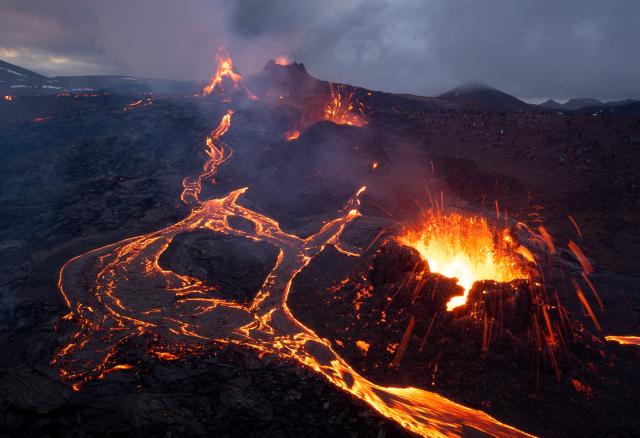 4 volcanic fissures erupting at the same time, surrounded by mountains, hills and rivers of lava. It was difficult for the photographer to decide which elements to include in the composition, let alone how to combine them into a single frame. If you look carefully, you will see that even though it is a good image,there are some issues: dead space at the top left and lack of sufficient negative space at the bottom right. This shows that the more information the landscape has, the more difficult it is to “solve the puzzle” and position all the compositional elements in a way that pleases the eye and follows the guidelines provided in previous articles.
4 volcanic fissures erupting at the same time, surrounded by mountains, hills and rivers of lava. It was difficult for the photographer to decide which elements to include in the composition, let alone how to combine them into a single frame. If you look carefully, you will see that even though it is a good image,there are some issues: dead space at the top left and lack of sufficient negative space at the bottom right. This shows that the more information the landscape has, the more difficult it is to “solve the puzzle” and position all the compositional elements in a way that pleases the eye and follows the guidelines provided in previous articles.
DJI Mavic II Pro 1/3 sec, ISO100, f/11 - Fagradalsfjall, Iceland
A seemingly harmonious arrangement of elements in the field of view can be pleasing during field inspection, but when you transfer this view to the camera's real-time view, new elements can emerge that disturb the balance and feel of the composition, making it less effective. Furthermore, It may happen that an element that seemed appealing to the eye, once you try to include it completely in the composition, involves compromises, such as having to reduce the size of other elements in the foreground or leaving too much negative space. For example, to completely include a towering mountain in the frame, you may need to use an ultra-wide-angle lens, which may make distant mountains in the background appear tiny.
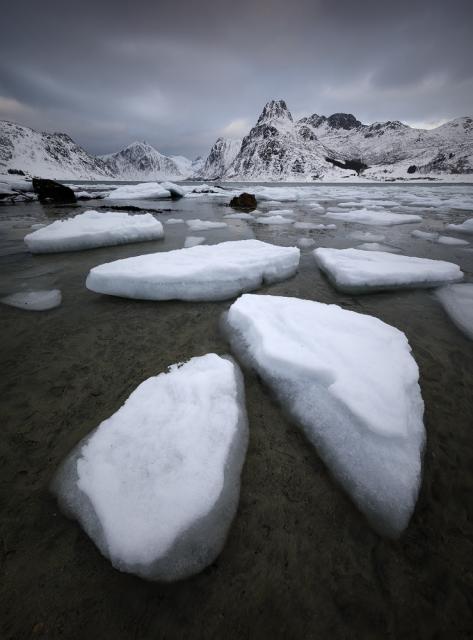 Shooting at an ultra-wide angle forced the photographer to make the mountains almost too small to be usable as background subjects.
Shooting at an ultra-wide angle forced the photographer to make the mountains almost too small to be usable as background subjects.
Canon 5D IV, Canon 11-24mm F4 Focus stack at ISO 100 | 1/20 second | F11
So, first of all, when trying to define the composition, it is essential not only to recognize the main subjects, but also to ensure that they interact harmoniously within the camera's viewfinder.
Identifying the main subjects involves both foreground and background elements, but the decision about which background landscape elements to include is often easier. Large mountains are a given, while the foreground composition can be shaped and adapted with greater flexibility.
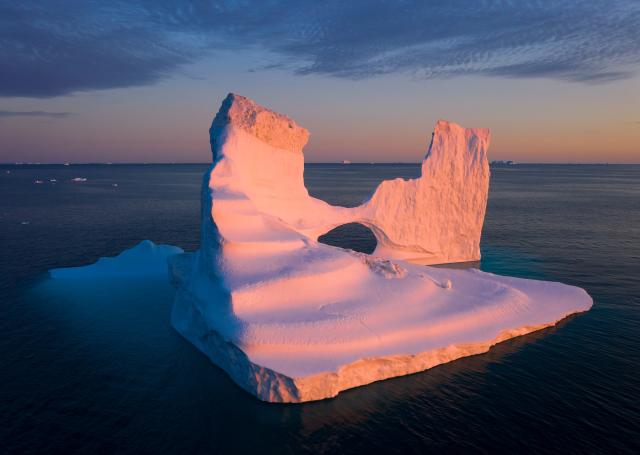 It was very easy for the photographer to determine what the topic was and its interesting parts when he approached this incredible iceberg. What remained to be done was to fill the image with its beautiful details in a way that worked well with both the clouds (see how the outline of the clouds corresponds to the position of the left "tower") and the icebergs in the background, keeping enough negative space around it.
It was very easy for the photographer to determine what the topic was and its interesting parts when he approached this incredible iceberg. What remained to be done was to fill the image with its beautiful details in a way that worked well with both the clouds (see how the outline of the clouds corresponds to the position of the left "tower") and the icebergs in the background, keeping enough negative space around it.
Disko Bay, Greenland - DJI Mavic II Pro | ISO 100 | 1/30 second | F8
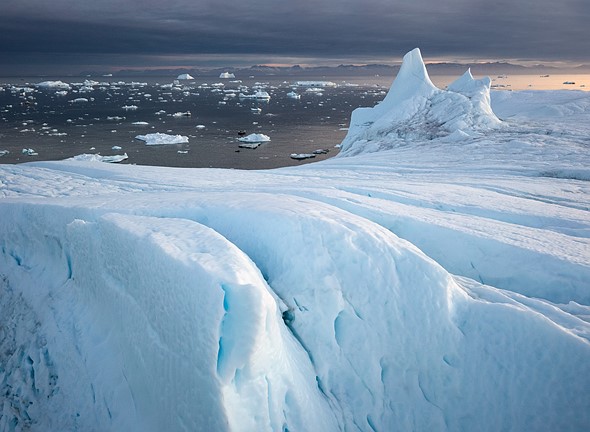 In this image, it was much more difficult for the photographer to determine what to include. Both the subjects in the foreground (bottom left) and those in the background (the highest part of the iceberg at the top right) are different compositional masses (and different subjects) with different traits and must be treated as such, independently by the fact that they are part of the same iceberg. Using a drone with a fixed focal length lens made him lose one of the ways to control the composition in a landscape shot: choosing the focal length and, therefore, the ability to control perspective.
In this image, it was much more difficult for the photographer to determine what to include. Both the subjects in the foreground (bottom left) and those in the background (the highest part of the iceberg at the top right) are different compositional masses (and different subjects) with different traits and must be treated as such, independently by the fact that they are part of the same iceberg. Using a drone with a fixed focal length lens made him lose one of the ways to control the composition in a landscape shot: choosing the focal length and, therefore, the ability to control perspective.
Disko Bay, Greenland - DJI Mavic II Pro | ISO 200 | 1/40 second | F9
The interesting parts of your subjects
There is an important subtlety in my choice of words. My intention is not for you to saturate the composition with all the elements of the landscape, but rather for you to emphasize its most interesting and relevant parts. In many cases, the entire subject is fascinating and worthy of attention, but there are situations in which including the entire subject would be counterproductive. Understanding which parts of the subject are the most fascinating may not be immediate, but this understanding allows the photographer to create the best possible composition in any situation, often making the difference between an exceptional shot and a less successful one.
Furthermore, the interest we attach to the different parts of a subject is often influenced by the role they play within the composition. For example, it is not always necessary to include an element used to completely frame the scene, but rather present a part of it that contributes significantly to the composition. On the other hand, when it comes to the main foreground element, we likely want to show it in its entirety.
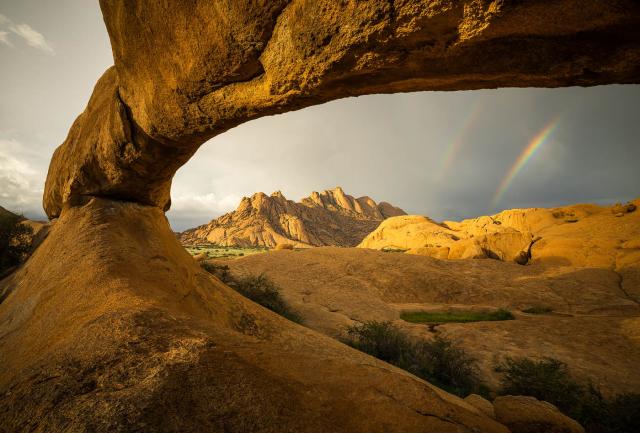 There was no need to include the entire rock arch as it is used to frame the main subjects: Mount Spitzkoppe and the double rainbow. Surely the mountain needs to be included as much as possible in its entirety.
There was no need to include the entire rock arch as it is used to frame the main subjects: Mount Spitzkoppe and the double rainbow. Surely the mountain needs to be included as much as possible in its entirety.
Sony A7R, Canon 16-35mm f/2.8 f/16, ISO 100, 1/10 sec - Spitzkoppe, Namibia
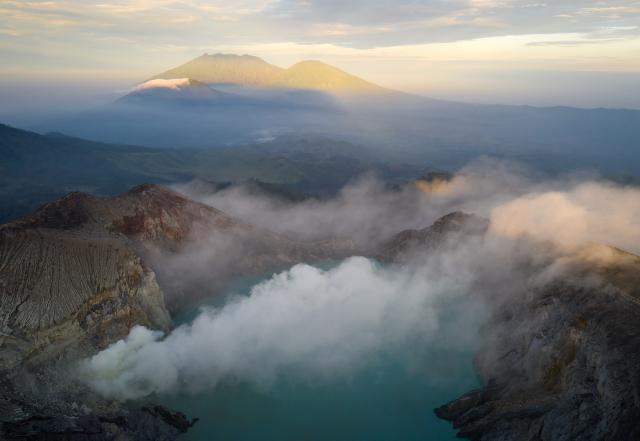 In this image the main subjects are all part of the same glacier. The thing that makes this composition a good composition is the fact that the photographer chose the interesting parts of these subjects, mainly the reflection at the bottom right. If he had not made this consideration perhaps it would not have been clear what the foreground was. I hope you also agree that he filled the image with the most interesting parts of the subject in a nice way.
In this image the main subjects are all part of the same glacier. The thing that makes this composition a good composition is the fact that the photographer chose the interesting parts of these subjects, mainly the reflection at the bottom right. If he had not made this consideration perhaps it would not have been clear what the foreground was. I hope you also agree that he filled the image with the most interesting parts of the subject in a nice way.
DJI Mavic II Pro | ISO 100 | 1/25 second | F6.3
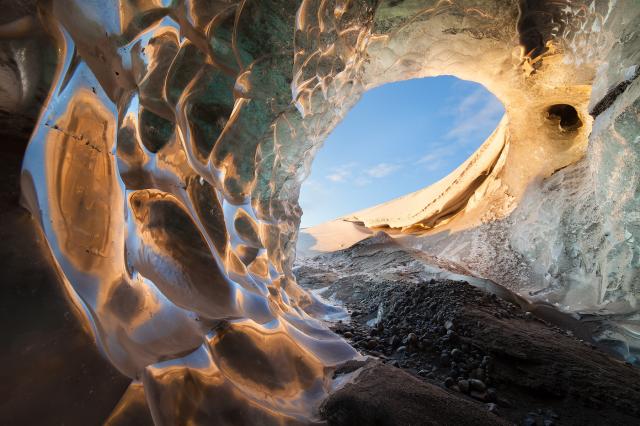 In this image the main subjects are all part of the same glacier. The thing that makes this composition a good composition is the fact that the photographer chose the interesting parts of these subjects, mainly the reflection at the bottom right. If he had not made this consideration perhaps it would not have been clear what the foreground was. I hope you also agree that he filled the image with the most interesting parts of the subject in a nice way.
In this image the main subjects are all part of the same glacier. The thing that makes this composition a good composition is the fact that the photographer chose the interesting parts of these subjects, mainly the reflection at the bottom right. If he had not made this consideration perhaps it would not have been clear what the foreground was. I hope you also agree that he filled the image with the most interesting parts of the subject in a nice way.
Canon 5D2, Samyang 14mm F2.8, 1/25 sec, F14, ISO100, manual HDR processing - Breiðamerkurjökull, Iceland
What the hell does "saturate the composition" mean?
When I talk about 'saturating the composition', I am referring to a concept of balance in the arrangement of elements. In other words, a landscape image must contain the right amount of information to be interesting, without overloading the viewer with excessive detail or appearing chaotic. Compositional elements must be clear, separate from each other, and prominent enough in the frame to allow viewers to understand what they see. However, no one element should dominate so much that it overshadows the others, creating a sense of tension. The elements should not be so massive that they eliminate the desired negative space, leaving the image breathless. Each 'compositional mass' within the image has an apparent direction and requires adequate negative space in that direction and all around, depending on its importance and complexity.
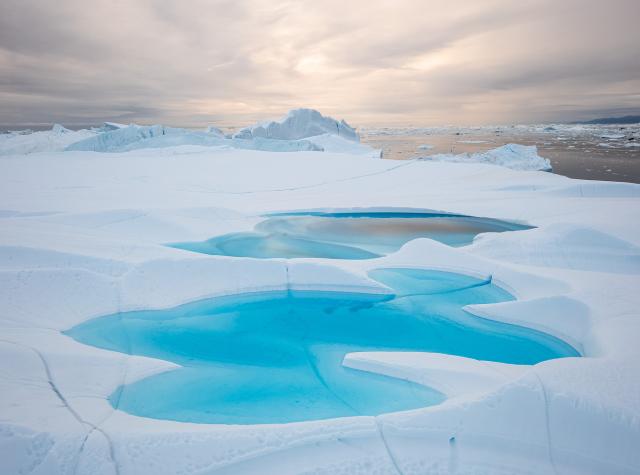 A saturated composition: the frame is full of information and interest while maintaining balance, separation and negative space.
A saturated composition: the frame is full of information and interest while maintaining balance, separation and negative space.
DJI Mavic II Pro f/8, ISO 100, 1/25 sec - Semermiut, Greenland
The fundamental idea is that the compositional elements should occupy as large a space as possible in the image, but respecting all these constraints. The larger the elements, the greater the amount of information they can share, the more details of nature that observers can explore, the better the image will be. 'Saturating the composition' can be thought of as an 'optimisation' concept where we try to maximize the size of the compositional elements within the limits defined by these constraints, as discussed in the previous paragraphs.
This approach aims to involve viewers more deeply in the scene, enhancing their involvement and their ability to feel part of the natural landscape or scene depicted.
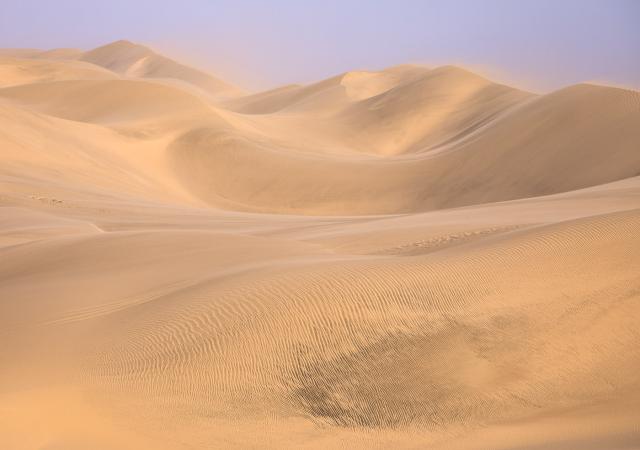 La parte interessante della duna in primo piano è l'area più scura. Questo colore scuro è, infatti, il ferro, che abbonda nelle dune del Namib. Le dune si spostano nel corso dei secoli verso sud e, quando raggiungono Sossusvlei, sono di colore rosso, a causa dell'ossidazione del ferro.
La parte interessante della duna in primo piano è l'area più scura. Questo colore scuro è, infatti, il ferro, che abbonda nelle dune del Namib. Le dune si spostano nel corso dei secoli verso sud e, quando raggiungono Sossusvlei, sono di colore rosso, a causa dell'ossidazione del ferro.
Canon 5D4, Canon 70-300 f/4-5.6 1/320 sec, f/10, ISO100 - Sandwich Harbour, Namibia
Returning to the first image in this article, taken at the Mata Jitu waterfall on the enchanting island of Moyo in Indonesia, I inserted some red lines to highlight the main compositional elements in the image (while the minor elements are indicated with dotted lines).
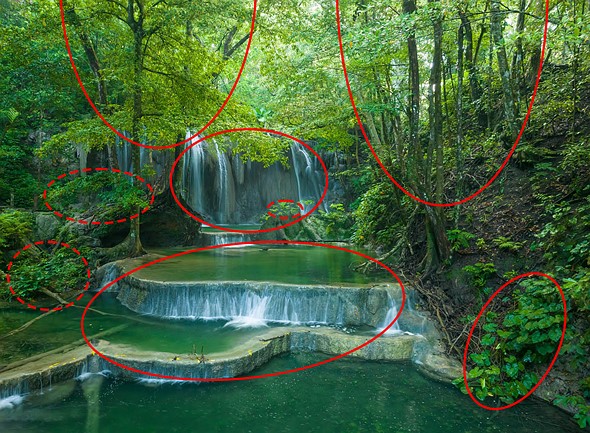
Here's what you can notice:
First of all, the main compositional elements are positioned dispersedly in the image. They are separated as much as possible, both physically (in terms of distance between them) and visually, with the waterfall distinct from its surrounding features (as mentioned in previous articles on separation).
Secondly, there is negative space around the main elements, contributing to the important feeling of depth. Finally, and this is most relevant to this article, is that although the trees at the top of the image are the main compositional elements, they are not completely contained in the frame.
That's because the most interesting parts of the trees, the ones that balance and saturate the composition, are all we need.
How does all this apply in practice?
Here's a good approach: Once you've identified your main subjects, look for the most interesting parts of those subjects.
Treat these interesting parts as the main compositional masses in the image and begin the balancing process discussed in previous articles. Follow the principles of negative space, distance, and other considerations I've introduced to you in this series.
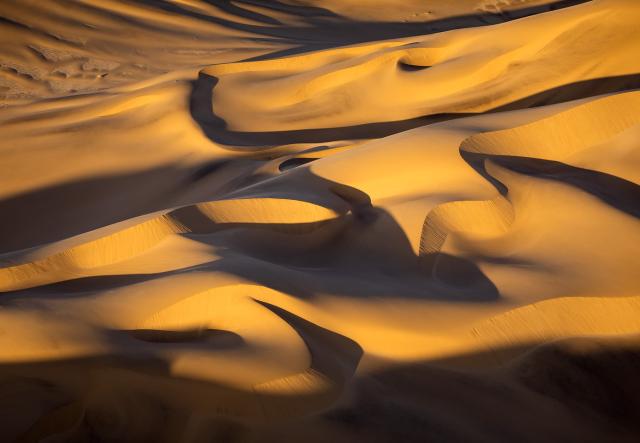 The photographer's intuition to notice and include the interesting parts of these dunes allowed him to capture a very interesting and evocative image.
The photographer's intuition to notice and include the interesting parts of these dunes allowed him to capture a very interesting and evocative image.
Canon 5D3, Canon 70-300mm f/4-5.6 1/500 sec, f/7.1, ISO400, 128mm
This might sound complex, but it's actually a way to think about what works and what doesn't. to be able to explain how our intuitions will guide our creative process.
When you subscribe to the blog, we will send you an e-mail when there are new updates on the site so you wouldn't miss them.
By accepting you will be accessing a service provided by a third-party external to https://www.insightadv.it/


































































Comments